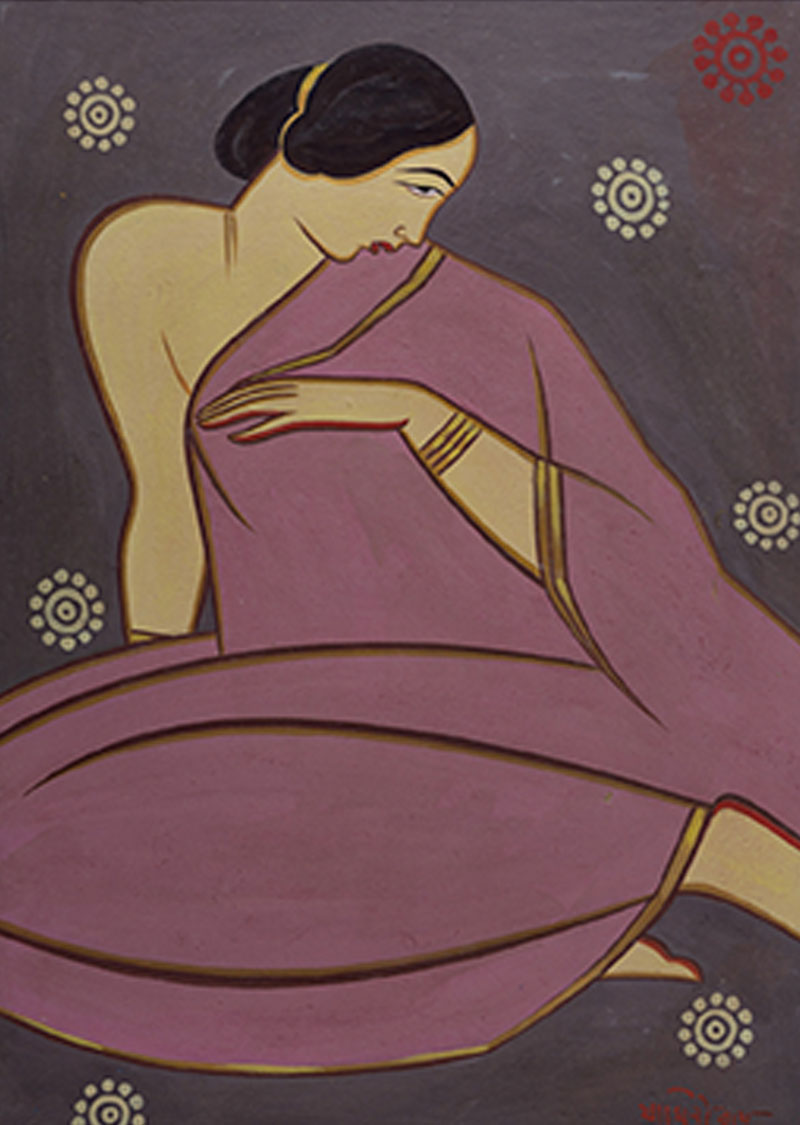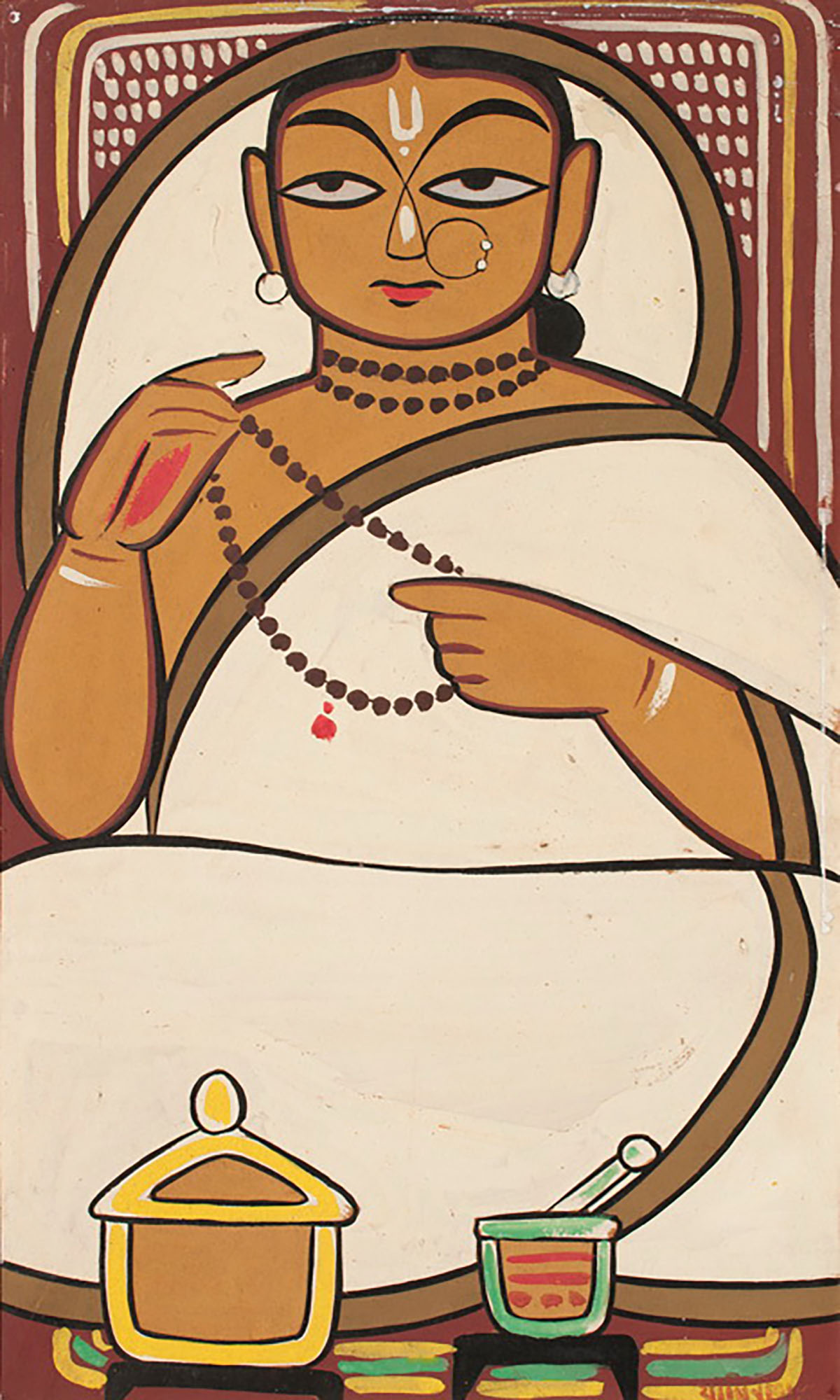ARTICLE
Jamini Roy
Roy’s work was instrumental in defining a unique identity for Indian art in postcolonial India, foregrounding the indigenous cultural ethos as opposed to socio-cultural and political issues such as war, famine and poverty that were being examined by his contemporaries. His early works, created post-1930s, featured religious icons from Hindu epics and mythology, Biblical themes and women. His figures were characterised by exaggerated almond-shaped eyes and expressionless faces. In keeping with the timeless and ‘author-less’ social and community traditions of folk art, Roy neither named nor dated his works; most of his paintings have been titled posthumously. He also created numerous works throughout the 1950s that he often gave away.
However, some critics have argued that Roy’s appropriation of folk motifs puts into question the uniqueness of his work, while others allege that the simplified structural pattern of his work was largely driven by his desire to mass-produce paintings for financial gains. He has also been criticised for the idealisation of his artistic subjects, their formulaic depiction, and the alienation of his works from the social, political and cultural realities of his time.
Roy’s work has been exhibited widely, including at the National Gallery of Modern Art (NGMA), New Delhi; the Lalit Kala Akademi, New Delhi; and the Victoria & Albert Museum, London. His works are in the collections of NGMA and the Lalit Kala Akademi. He was awarded the Padma Bhushan in 1955. He was also one of the nine artists whose works were declared national treasures under the Antiquities and Art Treasures Act, 1972.
Roy died in Kolkata in 1972.
Bibliography
Our website is currently undergoing maintenance and re-design, due to which we have had to take down some of our bibliographies. While these will be re-published shortly, you can request references for specific articles by writing to hellomapacademy@map-india.org.








